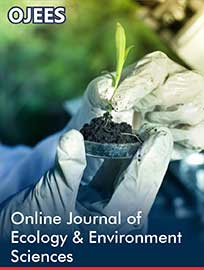 Research Article
Research Article
Building Environmental Literacy through Holistic Storytelling
Kristiina A Vogt1*, Alexa Schreier1, 2, Alishia Orloff3, Michael E Marchand4, Daniel J Vogt1, Phil Fawcett5, Samantha De Abreu1, Turam Purty5 and Maia Murphy-Williams1
1School of Environmental and Forest Sciences, University of Washington, Seattle, Washington, 98195-2100, USA
2Evans School of Public Policy & Governance, University of Washington, Seattle, Washington, 98195-2100, USA
3School of the Environment, Yale University, New Haven, Connecticut, 06511, USA
4Confederated Tribes of the Colville Reservation, Omak, Washington, 98841, USA
5iSchool, University of Washington, Seattle, Washington, 98105, USA
Kristiina A Vogt, School of Environmental and Forest Sciences, Bloedel Hall, 3715 West Stevens Way NE, University of Washington, Seattle, Washington, USA.
Received Date: July 24, 2021; Published Date: August 19, 2021
Abstract
Today, technology delivers information related to our environment, but not the skills of how to form knowledge and wisdom when too much data is available due to technology. Therefore, many environmental problems persist for decades as researchers explore one narrow aspect of the problem, and do not recognize problem interconnectivities. This fosters environmental illiteracy in the environmental decision process. In contrast, the holistic knowledge-forming process of Indigenous People teach their youth to form holistic knowledge of nature and to realize that their decisions may impact 7 generations of their tribe. This prepares each tribal member to be part of the community-level decision process. Therefore, the concept of STEM science learning should be expanded to include Indigenous STEAM (iSTEAM) to help build environmental literacy.
Keywords:Too much environmental information; Decontextualized management; Indigenous and Local knowledge; Holistic stories; Wisdom deprivation; Indigenous STEAM
-
Kristiina A Vogt, Alexa Schreier, Alishia Orloff, Michael E Marchand et al. Building Environmental Literacy through Holistic Storytelling. Online J Ecol Environ Sci. 1(1): 2021. OJEES.MS.ID.000501.





